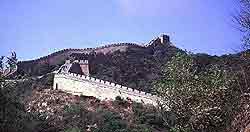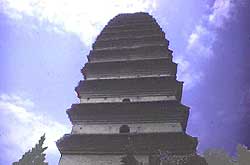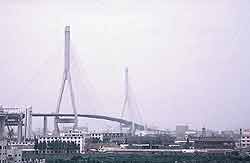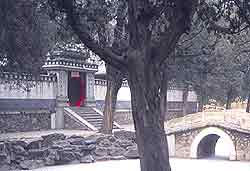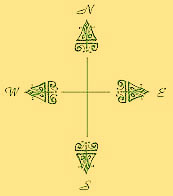
People work hard in China. On every side there is evidence that they have done so for thousands of years. The fruit vendor rearranging his produce after each sale to make an attractive display, the chatter of bargaining in the free markets, the groaning loads of coal, pipe, brick, and recycled cardboard in every sort of conveyance from the semi-trailer to the horse cart to the back of a man, all add to the background din of large machinery and hammers creating new towers to add to the Beijing sky. These are the sounds of today and they were the sounds of Beijing when the Ming dynasty rebuilt the city in its own image. |

